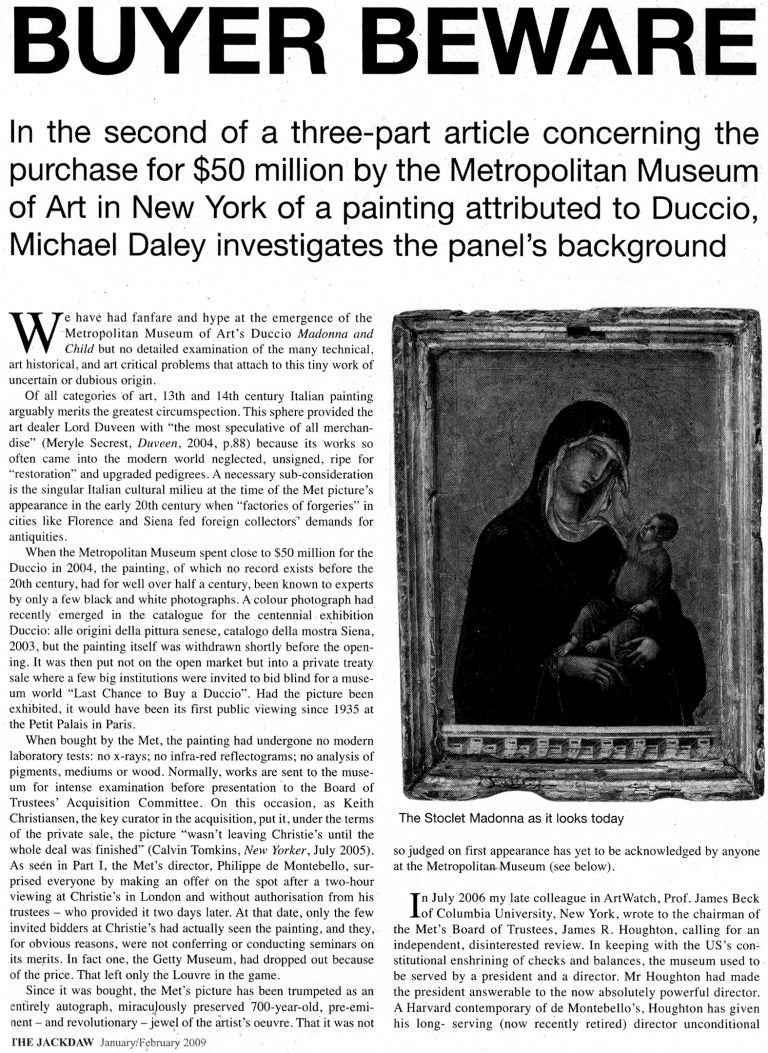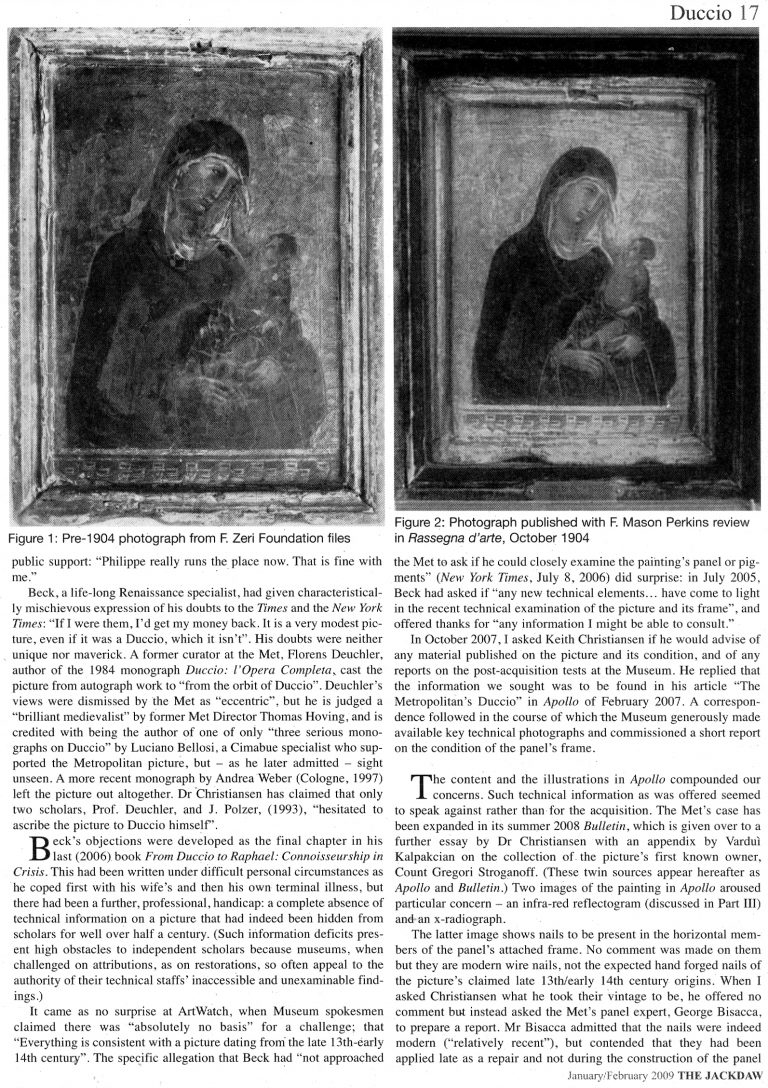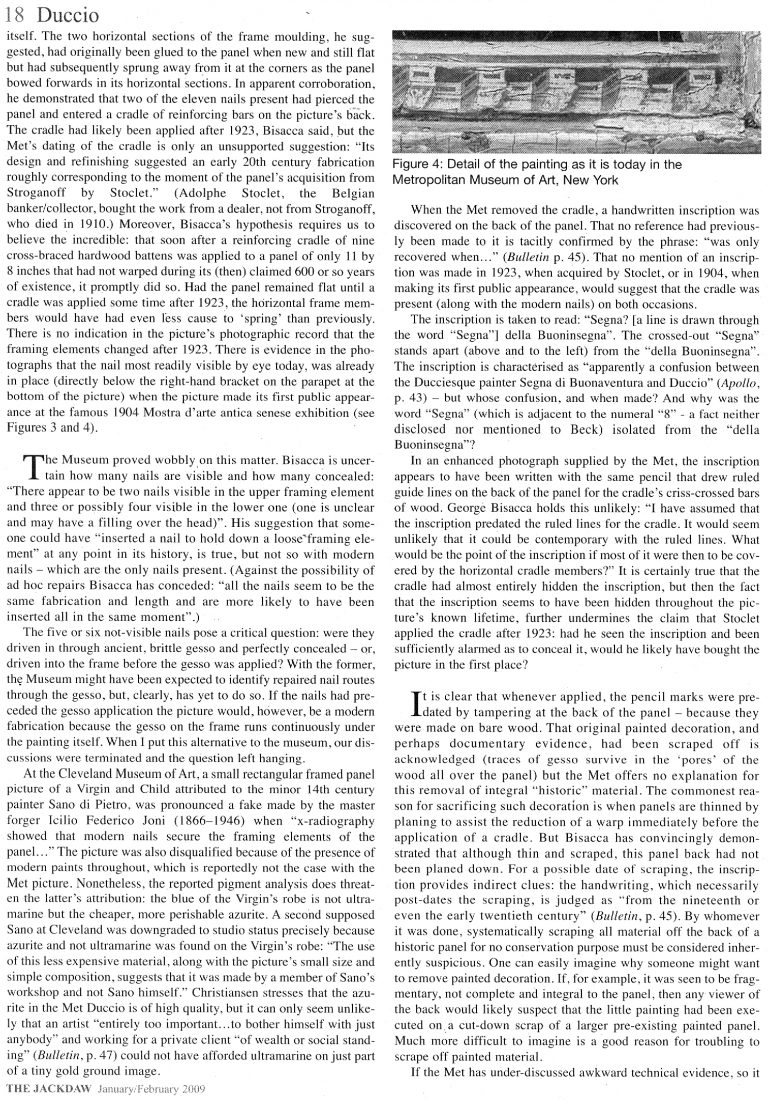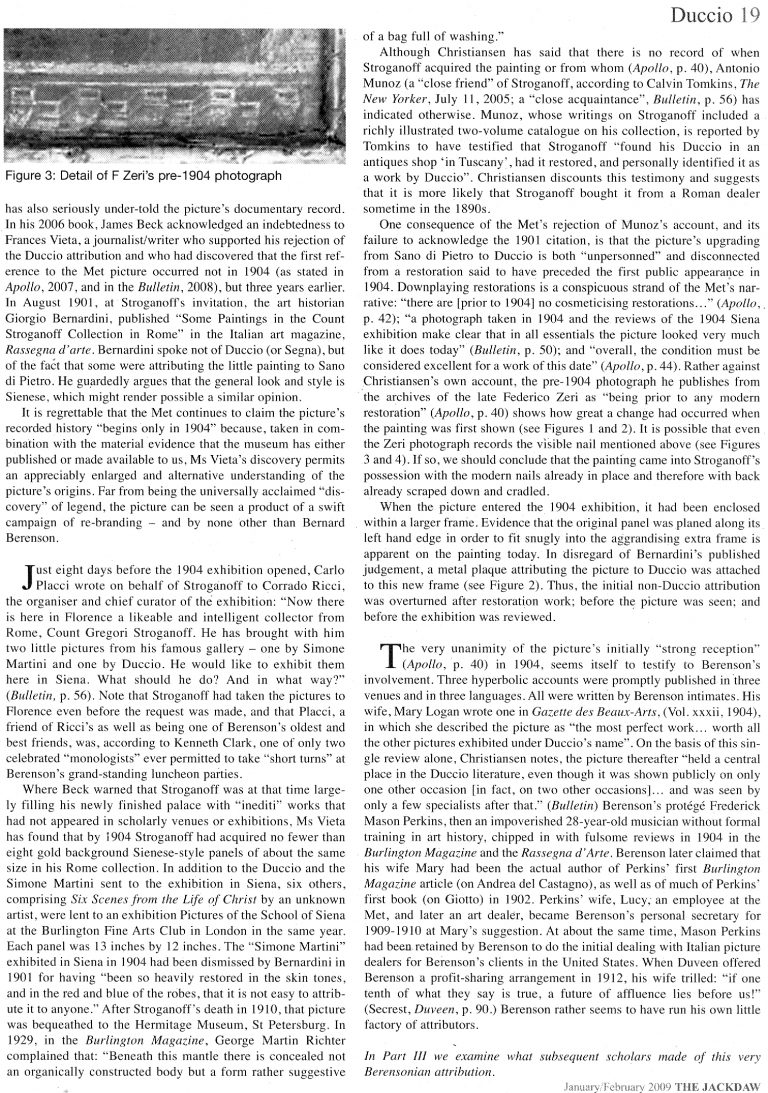In Part II* of III, Michael Daley introduces the $45-50mn purchase of a panel attributed to the Father of the Sienese school of painting (*As published in the January/February 2009 issue of the The Jackdaw.)
Buy in haste, repent at leisure? The Metropolitan Museum of Art’s purchase in 2004 of the so-called Stoclet Duccio met near-universal acclaim in New York and was hyperbolically hailed by the museum itself as “a single supreme masterpiece of Western painting” and no less than “a turning point in art history”. The work is currently on show at the National Gallery in the “Siena – The Rise of Painting 1300-1350” exhibition. There, it is described as “the exquisite, small half-length Virgin and Child often referred to as the Stoclet Madonna now in the Metropolitan Museum of Art, New York.”
Coming next in Part III: “TOXIC ATTRIBUTIONS?”





